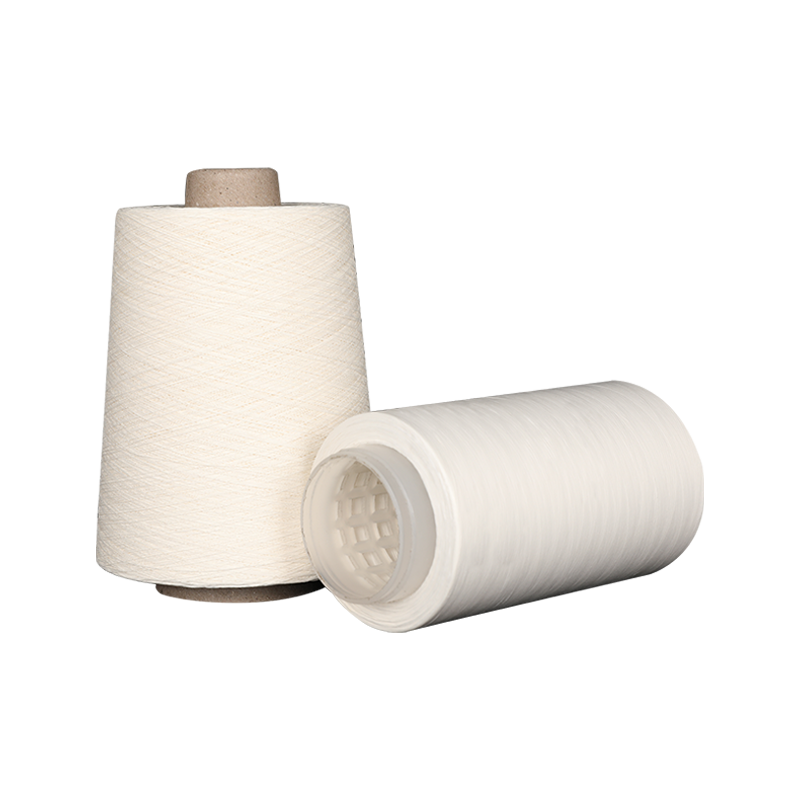Paper yarn is an innovative, eco-friendly material made by twisting or spinning strips of paper into yarn-like threads. Combining the strength and flexibility of paper with textile manufacturing techniques, paper yarn has gained increasing attention as a sustainable alternative in various industries.
This article dives into the main applications of paper yarn in the textile and packaging industries, highlighting how this versatile material is shaping new product designs while promoting environmental responsibility.
Before discussing applications, it’s helpful to understand what paper yarn is. Paper yarn is produced by converting cellulose-based paper into narrow strips and then spinning or twisting them into yarns. These yarns can be further processed or woven into fabrics, ropes, or decorative materials.
Paper yarn’s unique combination of lightweight, biodegradability, and reasonable strength makes it a promising material for eco-conscious manufacturers.
Paper yarn is increasingly used to create sustainable fashion items such as scarves, hats, and bags. When blended with other fibers like cotton or linen, paper yarn adds texture and reduces environmental impact.
Lightweight fabrics: Paper yarn contributes to breathable, light materials ideal for summer wear.
Unique textures: Its slightly coarse and rustic feel provides designers with fresh aesthetic possibilities.
Biodegradable textiles: Garments made partly with paper yarn decompose faster after disposal, reducing textile waste.

In home decor, paper yarn is used in products like:
Curtains and blinds: Paper yarn offers a natural, earthy look while maintaining light filtration.
Rugs and mats: Durable enough for woven rugs, providing a sustainable alternative to synthetic fibers.
Cushion covers and upholstery accents: Adds tactile variety and eco-friendly appeal.
Some industrial uses exploit paper yarn’s strength and lightness for:
Geotextiles in soil erosion control
Reinforcement layers in composites or laminates
Disposable protective covers
Though still niche, these applications show paper yarn’s expanding role beyond fashion.
Paper yarn is widely used as twine or string for packaging purposes. Compared to plastic strings, paper yarn:
Is biodegradable and compostable, reducing landfill waste.
Offers sufficient tensile strength for tying and bundling lightweight to medium-weight goods.
Can be printed or dyed for branding purposes.
Examples include wrapping gift boxes, tying flower bouquets, or bundling paper products.
Paper yarn adds visual appeal and texture to packaging, especially in luxury or handmade product segments.
Used as ribbons or bows for gift wrapping
Incorporated into product tags or handles for bags
Applied as woven elements in eco-friendly gift boxes or bags
This enhances the tactile and aesthetic experience while aligning with sustainable packaging trends.
In some packaging designs, paper yarn is integrated into woven mats or layers to provide:
Cushioning for fragile products
Structural reinforcement in eco-friendly crates or boxes
Its biodegradability makes it a preferable choice over synthetic materials in environmentally conscious supply chains.
Sustainability: Made from renewable cellulose, paper yarn is biodegradable and reduces dependence on plastics or non-renewable fibers.
Cost-Effectiveness: While slightly higher than synthetic yarns, paper yarn often offers a balance of eco-benefits and affordability.
Customizability: Paper yarn can be dyed, printed, or coated to achieve specific appearances or functional properties.
Lightweight and Strong: Despite being lightweight, paper yarn has respectable tensile strength suitable for many textile and packaging uses.
Moisture Sensitivity: Paper yarn can weaken if exposed to water unless treated with protective coatings.
Durability Limits: Not as robust as synthetic fibers for heavy-duty applications; more suited for lightweight or decorative purposes.
Processing Requirements: Requires specialized machinery and handling to avoid breakage during production.
Despite these challenges, ongoing innovations in coatings and blending with other fibers continue to expand paper yarn’s usability.
As demand for sustainable products rises, paper yarn is positioned for growth in:
Blended sustainable fabrics mixing paper yarn with organic cotton, hemp, or bamboo.
Zero-waste packaging solutions where paper yarn replaces plastic in tying, cushioning, or decorating.
Innovative composites using paper yarn for biodegradable technical textiles.
Paper yarn offers a versatile, environmentally friendly alternative to traditional fibers and plastics in both the textile and packaging industries. Its combination of biodegradability, light weight, and reasonable strength makes it ideal for sustainable apparel, home textiles, eco-packaging twine, and decorative uses.
While not a complete substitute for all synthetic yarns, paper yarn is carving out a unique niche as consumers and manufacturers prioritize greener materials. Investing in paper yarn technologies and expanding its applications promises a more sustainable future for textiles and packaging.